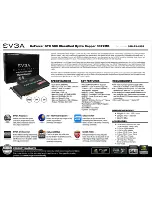
5
1.1.2 REMOTE TERMINAL FEATURES
•
Up to 63 autonomous data tables per message.
•
Multiple and individual message logs provide expedited message analysis.
•
Asynchronous Message Handling.
•
Dynamic Bus Control Acceptance
•
Message Illegality is internally programmable.
•
Employs data tables with individual tag words which indicate data validity, data latency,
table status and broadcast
•
Optionally sets the subsystem flag bit whenever stale data is transmitted or received data
is overwritten.
•
Issues interrupts on any subset of T/ R bit, subaddresses, mode commands, broadcast
messages and errors.
•
Optionally resets the real- time clock in response to a "Synchronize" mode command.
•
Optionally updates the lower 16 bits of the real- time clock in response to a "Synchronize
With Data" command.
•
Internally loops- back messages under host control for test purposes.
•
Employs a decoder algorithm which ensures high noise immunity and a low error rate.
•
Software RT Address Lockout.
•
MDC3818 Status Response, Error Handling, Status Bit Definition, Mode Code Operation.
•
Separate Broadcast Tables and Interrupts.
1.1.3 BUS MONITOR FEATURES
•
Simple setup and operation
•
Preset multiple data blocks.
•
Only one MT Data Start Address Register is required to control unlimited number of
message blocks. The data block sizes and locations are totally programmable.
•
MT initialized by writing to three MT Configuration Registers and the MT Interrupt
Mask Register.
•
Error detection and reporting
•
All encoding, timing and protocol errors defined by the Protocols are detected.
•
Programmable Monitor Modes:
- Word Monitor, transfers all data with/ without ID and Time Tag words.
- Message Monitor, transfers all Command and Status words with/ without ID
and Time Tag
,
while data words are transferred directly to conserve memory
space.
•
Concurrent Bus Monitor and Remote Terminal operation.
•
Selective Message Monitor, based on RT Address.
•
Programmable Interrupt for End of Block.





































